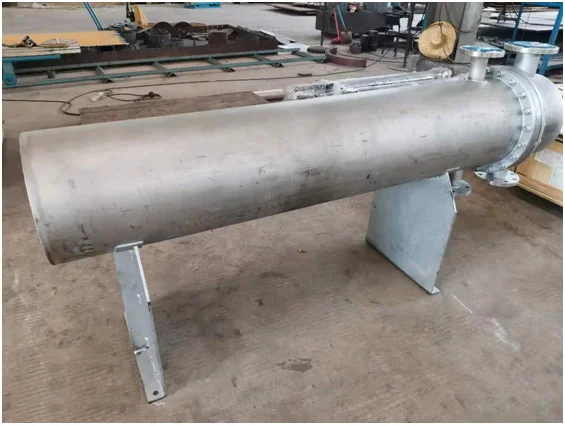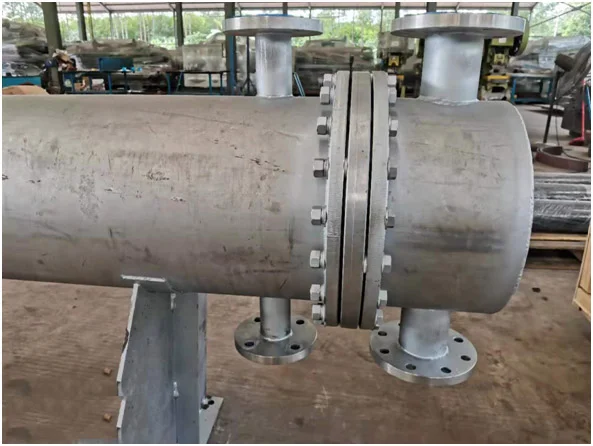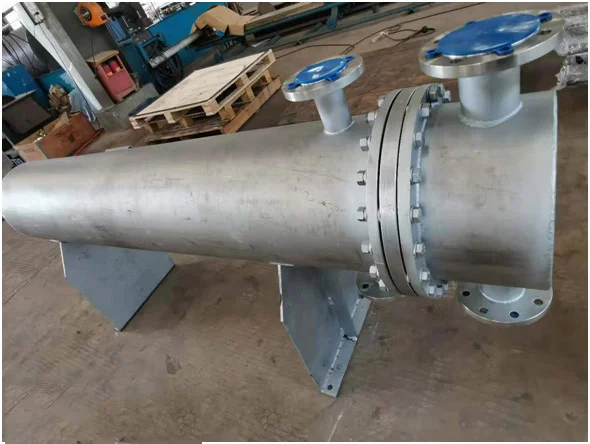Do you know what is the most important parts on a sewage source heat pump to affect its life spam?Of course it must be the evaporator and condenser quality. Because the heat exchange tube selection directly affects the cost and service life of the heat pump unit. The sewage source heat pump evaporator and condenser are usually used in an environment containing chloride ion corrosion. The heat exchanger tube is corrosion resistant. Performance is particularly important. The commonly used heat exchange tube materials include various duplex stainless steels (such as 2205, 2507, etc.), copper-nickel alloys (B10, B30), and so on.

Their respective characteristics are as follows:
B10 has better resistance to chloride ion corrosion, and the corrosion rate of B10 is lower than 0.03mm/a. With the increase of time, the average annual corrosion rate is getting lower and lower. And the corrosion resistance does not change much within 50 ℃. However, B10 is not resistant to erosion and corrosion, and its corrosion resistance is greatly reduced in a sandy water environment. The maximum permissible sea water velocity of B10 can refer to the British Naval Ship Engine Code. Therefore, when choosing B10 as the material of the heat
exchanger, the following points should be paid attention to:
(1) The flow velocity of the B10 nickel-copper pipe should be controlled, and should not exceed 1.5m/s, especially the influence of impurities such as mud and sand should be considered.
(2) B10 nickel-copper pipes and fittings should be butt connected by manual argon arc welding.
(3) In order to make B10 nickel-copper pipe form a complete protective film corrosion product film in seawater and ensure the expected service life of B10 nickel-copper pipe, before butt welding, B10 nickel-copper pipe and fittings must be cleaned of oil on the pipe end. One is to ensure the welding quality, and the other is to avoid the formation of a local carbon film in the tube.
B30 is also an excellent seawater heat exchanger material. Under the same corrosive conditions, its corrosion rate is about 1/3-1/2 of B10; B30 also has the problem of not being resistant to erosion and corrosion. The precautions are the same as those of B10; The upper limit of the flushing rate is higher than that of B10. In general design, the water flow rate of B30 does not exceed 3m/s.

Both 2205 and 2507 have good corrosion resistance. When the chloride ion concentration is 1100mg/lL, 2507 will not cause pitting and crevice corrosion. Due to the large relationship between corrosion and temperature, 2205 has a risk of crevice corrosion when the chloride ion concentration is 1100mg/lL and the temperature is higher than 32°C. Therefore, if 2205 is used as the material of the heat exchanger, measures should be taken to eliminate the gaps between pipe connections and intercrystalline gaps (for example, screw connections are not used in the project, and non-metallic gaskets between flanges are used to prevent intercrystalline gaps).
H.Stars has specialized in design and manufacture the high standard condenser and evaporators for 30 years. Welcome to contact us for more !


